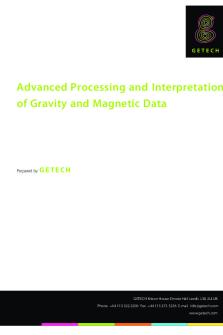LFT Interpretation PDF

| Title | LFT Interpretation |
|---|---|
| Author | Anonymous User |
| Course | Diseases in Biomedicine |
| Institution | University of Hull |
| Pages | 5 |
| File Size | 158 KB |
| File Type | |
| Total Downloads | 43 |
| Total Views | 148 |
Summary
LFT Interpretation & explanation...
Description
LFT Interpretation Resource: GP Resource, geeky medics, a guide to lab Ix, GP tutorial, https://labtestsonline.org.uk/tests/liver-function-tests (Good resource), medical masterclass page 18, LFTs include:
Transaminases o AST & ALT o Both ↑ in hepatocellular damage, o ↑↑ in drug toxicity, acute viral hepatitis, liver ischaemia o ↑ in alcohol-related, ALT o Source: liver specific o Isolated elevation: o Elevation with__: AST o Source: liver, heart, skeletal muscle, kidney, RBC ALP o Source: liver, bone, (gall stone? Biliary tract?) GGT (gamma-glutamyl transferase) o Albumin o Measure of liver function Total bilirubin o Prothrombin (PT) time o Indirect measure of liver function Coagulation screen o Measure of liver function ALT, AST, ALP and GGT: distinguish between hepatocellular damage and cholestasis Bilirubin, albumin and PT: assess the liver’s synthetic function
AST Source Significance of elevated level Causes
ALT
MI or cardiac pathology,
ALP
Hyperthyroidism Bone disease, liver disease, hyper/hypoPTH Consider stopping statins if ALT more than x3
GGT
of upper range
Geeky medics – Interpreting LFTs Step 1: Assess ALT & ALP
If ALT raised: more than x10 rise (↑↑) or less than x10 (↑) If ALP raised: more than x10 (↑↑) or less than x10 (↑)
Step 2: Compare ALT & ALP
ALT: hi conc. In hepatocytes, released w/hepatocellular injury (marker for liver cell injury) ALP: in liver, bile duct, bone tissue o Raised in liver pathology due to ↑ synthesis in response to cholestasis (reduction or stoppage of bile flow) o Indirect marker of cholestasis o Isolated ALP ↑: bone (Paget’s disease of bone) Comparison (ALT x10 ↑ vs ALP x3 ↑) o ↑ALT > ↑ALP predominant hepatocellular injury o ↑ALP > ↑ALT suggest cholestasis o Can have mix of both GGT o Check with ↑ALP o ↑GGT biliary epithelial damage & bile flow obstruction, alcohol, drugs (phenytoin) o ↑↑ GGT cholestasis Isolated ↑ALP o w/o GGT non-hepatobiliary pathology o anything leading to ↑bone breakdown o Causes: Bony mets, primary bone tumours (sarcom), vitD deficiency, recent bone fractures, renal osteodystrophy Jaundiced but normal ALT & ALP o Isolated ↑ bilirubin o Think pre-hepatic causes of jaundice o Causes: Gilbert’s syndrome (most common cause), haemolysis (check blood film, FBC, reticulocyte count, haptoglobin, LDH levels to confirm)
Step 3: Assess hepatic function
Liver’s synthetic f(x): o Conjugations & elimination of bilirubin o Albumin synthesis o Clotting factor synthesis o Gluconeogenesis Thus measure
o Serum bilirubin o Serum albumin o PT time o Serum blood glucose Bilirubin o Haem breakdown product o Unconjugated = non-water soluble, taken to liver to excrete (made soluble) o S&S can differentiate conjugated & unconjugated hyperbilirubinaemia o Colour of urine Unconjugated – not excreted in urine, not affect colour of pt. urine Conjugated – pass in urine, makes it darker o Colour of stool If bile & pancreatic lipase are unable to reach bowel (due to blockage, posthepatic) fat is not absorbed steatorrhoea (sign of biliary/pancreatic issue) o Colour of urine + stools indication to jaundice cause: Normal urine + normal stools = pre-hepatic cause (nothing affected) Dark urine + normal stools = hepatic cause (conjugated) Dark urine + pale stools = post-hepatic cause (obstructive) o Causes of unconjugated hyperbilirubinaemia include (pre-hepatic): Haemolysis (e.g. haemolytic anaemia) Impaired hepatic uptake (drugs, congestive cardiac failure) Impaired conjugation (Gilbert’s syndrome) o Causes of conjugated hyperbilirubinaemia include: Hepatocellular injury Cholestasis Liver disease, pancreatic disease, Dublin-Johnson syndrome Albumin o Helps to bind water, cations, FA and bilirubin; role in oncotic pressure o ↓ in: Liver disease (cirrhosis - ↓ production), inflammation (acute, temporary ↓ in liver production), excess loss (protein-losing enteropathy or nephrotic syndrome) PT time o Measures extrinsic pathway o In absence of other 2o causes (anticoagulant use, vitK deficiency), PTT can indicate liver dysf(x) ALT/AST ratio o ALT > AST CLD o AST > ALT cirrhosis, acute alcoholic hepatitis Gluconeogenesis o Serum blood glucose indirect measurement of liver synthetic function o One of last functions lost in liver failure
Step 4: Common patterns of derangement
Step 5: What to do next
Determine potential causes Common causes of acute hepatocellular injury include: o Poisoning (paracetamol overdose) o Infection (Hepatitis A and B) o Liver ischaemia Common causes of chronic hepatocellular injury include: o Alcoholic fatty liver disease o Non-alcoholic fatty liver disease o Chronic infection (Hepatitis B or C) o Primary biliary cirrhosis Less common causes of chronic hepatocellular injury include: o alpha-1 antitrypsin deficiency o Wilson’s disease o Haemochromatosis
Liver screen
LFTs Coagulation screen Hepatitis serology (A/B/C) Epstein-Barr Virus (EBV) Cytomegalovirus (CMV) Anti-mitochondrial antibody (AMA) Anti-smooth muscle antibody (ASMA) Anti-liver/kidney microsomal antibodies (Anti-LKM) Anti-nuclear antibody (ANA) p-ANCA Immunoglobulins – IgM/IgG Alpha-1 Antitrypsin – Alpha-1 Antitrypsin deficiency Serum Copper – Wilson’s disease Ceruloplasmin – Wilson’s disease Ferritin – Haemochromatosis
Urinary bile
Bile duodenum
+ bacteria urobilinogen Excreted in faeces, some in urine V sensitive urine test for liver damage, haemolytic disease and severe infections Normally has a little bit in urine If no pass into bowels (obstruction), detect in urine...
Similar Free PDFs

LFT Interpretation
- 5 Pages

Articulos LFT
- 3 Pages
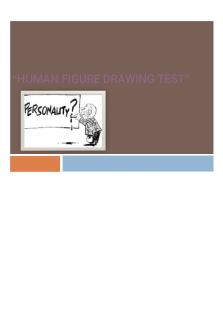
HFD Interpretation
- 42 Pages
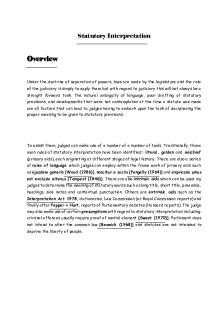
Statutory Interpretation
- 5 Pages

Statutory Interpretation
- 11 Pages
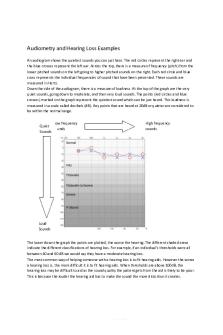
Audiogram Interpretation
- 12 Pages

Interpretation schreiben
- 2 Pages
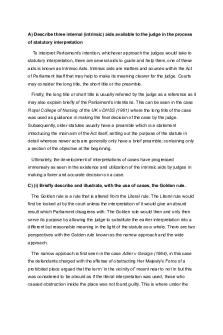
Statutory Interpretation
- 3 Pages

Spirometry Interpretation
- 2 Pages

Statutory Interpretation
- 6 Pages

Statutory Interpretation
- 6 Pages

Statutory Interpretation
- 6 Pages

Statutory Interpretation Notes
- 9 Pages

Interpretation Act 1984
- 71 Pages

Internal Aids - Interpretation
- 44 Pages
Popular Institutions
- Tinajero National High School - Annex
- Politeknik Caltex Riau
- Yokohama City University
- SGT University
- University of Al-Qadisiyah
- Divine Word College of Vigan
- Techniek College Rotterdam
- Universidade de Santiago
- Universiti Teknologi MARA Cawangan Johor Kampus Pasir Gudang
- Poltekkes Kemenkes Yogyakarta
- Baguio City National High School
- Colegio san marcos
- preparatoria uno
- Centro de Bachillerato Tecnológico Industrial y de Servicios No. 107
- Dalian Maritime University
- Quang Trung Secondary School
- Colegio Tecnológico en Informática
- Corporación Regional de Educación Superior
- Grupo CEDVA
- Dar Al Uloom University
- Centro de Estudios Preuniversitarios de la Universidad Nacional de Ingeniería
- 上智大学
- Aakash International School, Nuna Majara
- San Felipe Neri Catholic School
- Kang Chiao International School - New Taipei City
- Misamis Occidental National High School
- Institución Educativa Escuela Normal Juan Ladrilleros
- Kolehiyo ng Pantukan
- Batanes State College
- Instituto Continental
- Sekolah Menengah Kejuruan Kesehatan Kaltara (Tarakan)
- Colegio de La Inmaculada Concepcion - Cebu
